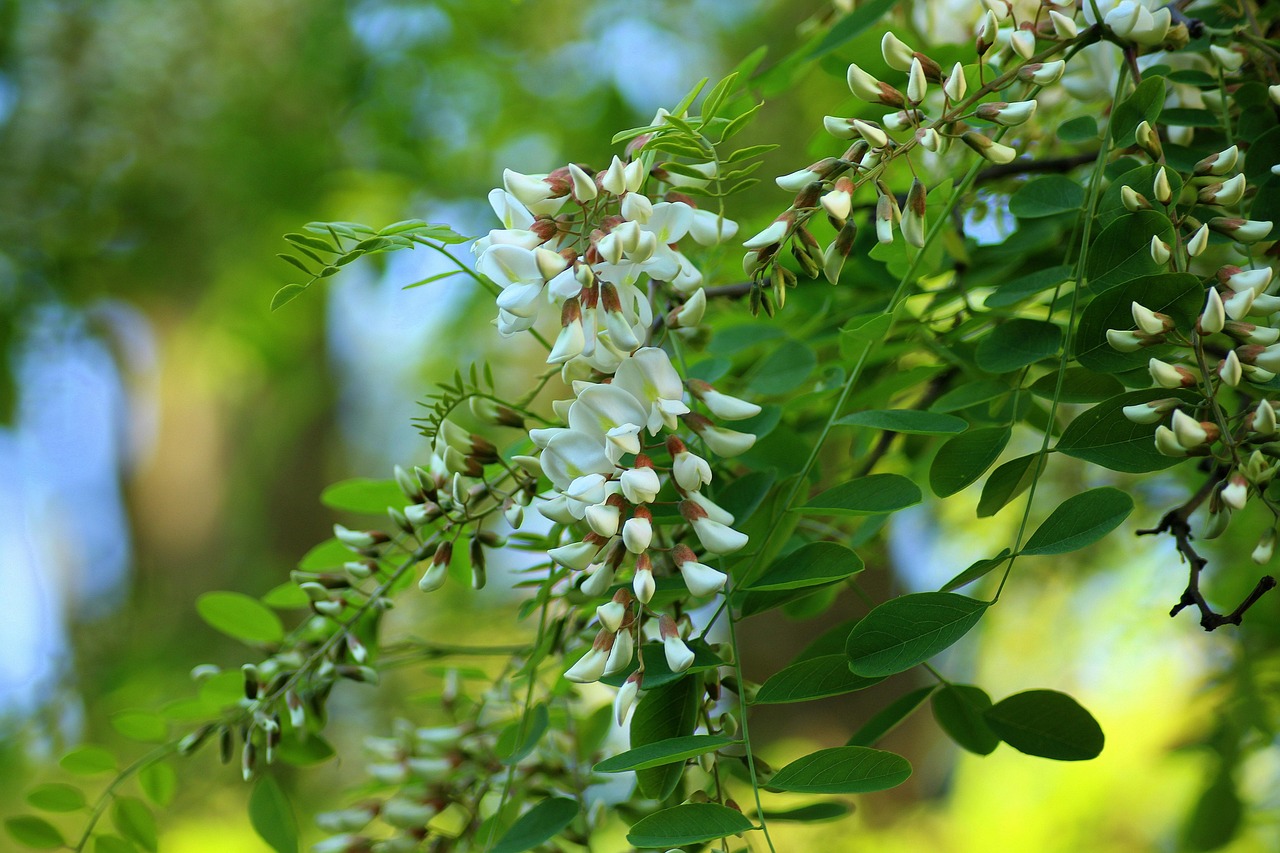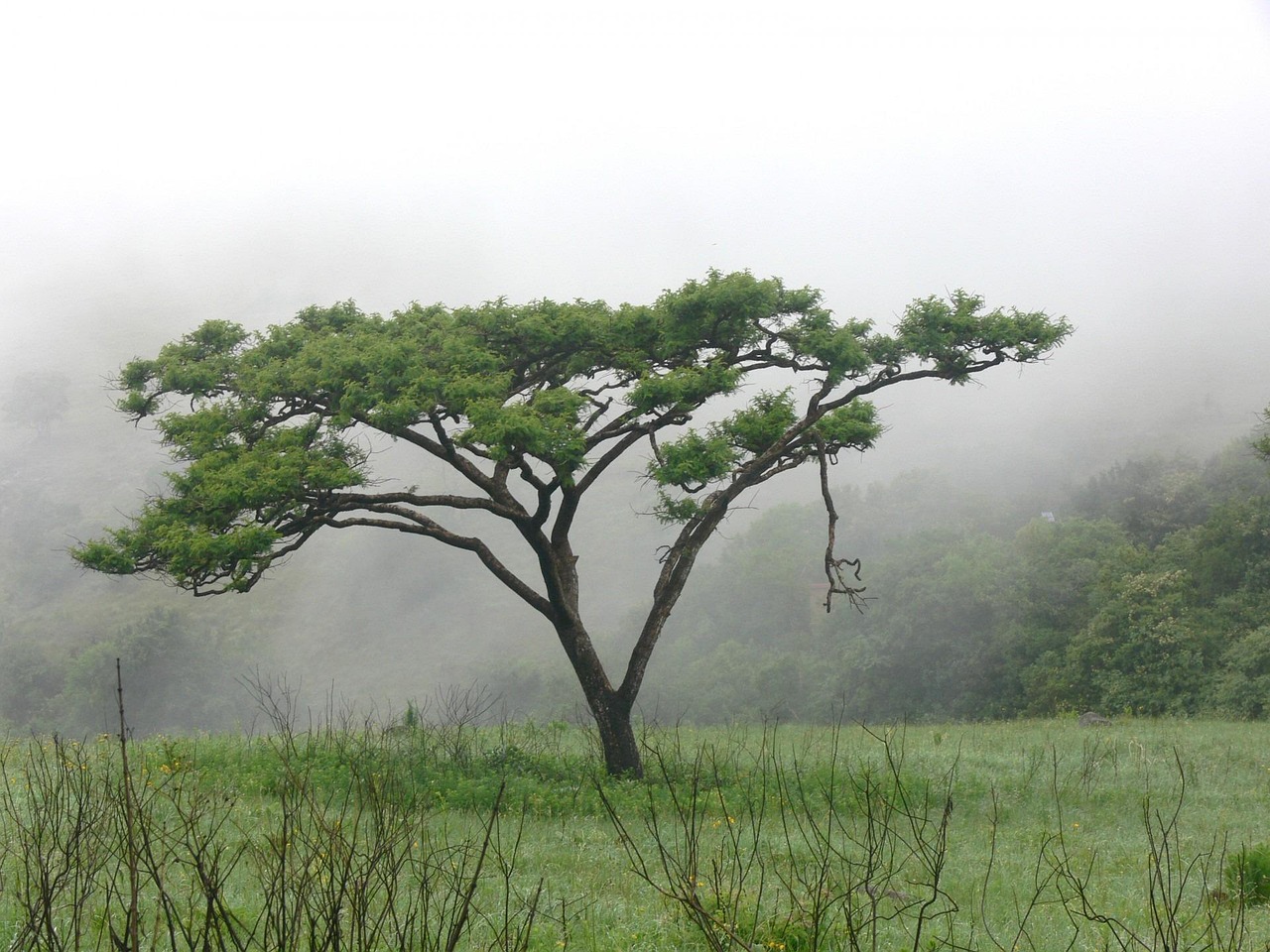The symbiotic relationship between acacia trees and ant species is a fascinating example of mutualism. Acacia trees provide shelter and food to ants, while ants protect acacia trees from herbivores and competing plants. This partnership enhances the survival and growth of both species in their ecosystems.
Understanding the Symbiosis

Symbiosis is a biological term that describes the interaction between two different organisms, which can be mutually beneficial, harmful, or neutral. In the case of acacia trees and ants, the relationship is primarily mutualistic. This means that both species benefit from the association they share. Acacia trees, belonging to the family Fabaceae, are unique in their adaptations that facilitate this relationship.
The acacia tree has evolved specific traits to attract ants. These include hollow thorns that serve as nesting sites and specialized structures known as extrafloral nectaries that produce sugary nectar. This nectar is a vital energy source for the ants. In return, these ants provide significant protection for the trees against various threats.
Key Features of Acacia Trees
Acacia trees are primarily found in tropical and subtropical regions around the world. They are characterized by their distinctive leaves and bark. Some of the key features of acacia trees that enhance their symbiotic relationship with ants include:
- Hollow Thorns: These thorns provide an ideal habitat for ant colonies.
- Extrafloral Nectaries: These glands produce nectar that attracts ants.
- Rapid Growth: Acacias can grow quickly, providing ants with a stable food source and shelter.
Ant Species Involved
Various ant species have formed symbiotic relationships with acacia trees. Some of the most notable include:
- Pseudomyrmex ferrugineus: Known for being aggressive defenders of acacia trees.
- Pseudomyrmex spinolae: This species also provides defense while benefiting from the tree’s resources.
- Crematogaster spp: These ants are less aggressive but still play a role in protecting the tree.
Benefits for Acacia Trees
The benefits that acacia trees derive from their partnership with ants are substantial. Ants act as natural pest controllers by warding off herbivores such as caterpillars and beetles that may harm the tree. Additionally, they minimize competition from other plants by clearing away nearby vegetation.
Table of Benefits
| Benefit | Description |
|---|---|
| Pest Control | Ants protect acacias from herbivorous insects. |
| Vegetation Clearance | Ants remove competing plants from the area around the tree. |
| Nutrient Cycling | Ants help in decomposing organic matter around the roots. |
This unique relationship illustrates how interconnected life forms are within ecosystems. The survival of acacia trees and their associated ant species demonstrates nature’s complexity and adaptability, showcasing how these organisms rely on each other for resilience against environmental challenges.
The Role of Ants in Acacia Tree Protection
Ants play a crucial role in the survival and health of acacia trees. Their protective behaviors extend beyond mere defense from herbivores. These tiny warriors engage in various activities that significantly benefit the trees. Understanding these roles helps to appreciate the complexity of their relationship.
Defensive Strategies
Ants utilize several strategies to defend acacia trees from potential threats. These strategies can be categorized as follows:
- Aggressive Defense: Certain ant species such as Pseudomyrmex ferrugineus are known for their aggressive behavior. They will attack any herbivore that attempts to feed on the acacia.
- Territorial Claims: Ants establish territories around their host trees. They patrol these areas diligently to deter any intruders.
- Alarm Signals: When a threat is detected, ants can release pheromones as alarm signals. This alerts nearby ants to rally and confront the danger.
Through these defensive strategies, ants not only protect the acacia trees but also ensure their own food supply remains intact. This interdependence is essential for both species’ survival.
Mutual Benefits Beyond Protection
The relationship between acacia trees and ants offers more than just protection from herbivores. Several other mutual benefits arise from this fascinating interaction.
Nutrient Exchange
Ants contribute to nutrient cycling in the ecosystem, which ultimately benefits acacia trees. As ants forage around the tree, they collect organic debris such as dead insects and decaying plant matter. They transport this material to their nests, where it decomposes and enriches the soil with nutrients.
This nutrient-rich soil enhances the growth of acacia trees, allowing them to flourish even in nutrient-poor environments. The organic matter from ant nests can provide essential elements that support tree health and vitality.
Seed Dispersal
Some species of ants also engage in seed dispersal, which can positively impact acacia populations. This behavior occurs when ants carry seeds away from the parent tree, often to their nests. The process benefits both parties:
- Reduced Competition: By moving seeds away from the parent tree, ants help ensure that young acacia plants have less competition for resources.
- Increased Germination Rates: Ants often consume the fleshy attachments on seeds. This action can stimulate germination when they deposit seeds in nutrient-rich locations.
The Ecosystem Impact of Acacia-Ant Relationships
The symbiotic relationship between acacia trees and ants extends its influence beyond individual plants and insects. It contributes significantly to ecosystem dynamics.
Biodiversity Promotion
The presence of acacia trees can promote biodiversity in their habitat. As these trees provide shelter and food resources for various species, they create a thriving ecosystem. The ants that protect them also support many other organisms:
- Pollinators: Acacia flowers attract various pollinators, which contribute to plant reproduction.
- Herbivores: While ants protect acacias from some herbivores, they create a balance that allows certain species to thrive without overwhelming the ecosystem.
- Decomposers: The organic debris generated by both the trees and ants supports a range of decomposing organisms, maintaining soil health.
This intricate web of life showcases how interconnected species can create vibrant ecosystems, with acacia trees and ants as key players in that network.

Challenges in the Acacia-Ant Relationship

While the relationship between acacia trees and ants is predominantly beneficial, various challenges can impact its stability. Understanding these challenges is essential to grasp the dynamics of this symbiosis.
Environmental Changes
Environmental changes, such as climate fluctuations and habitat destruction, pose significant threats to acacia trees and their ant partners. Key factors include:
- Climate Change: Rising temperatures and changing precipitation patterns can affect the growth and health of acacia trees. This, in turn, can disrupt the availability of resources for ants.
- Deforestation: The clearing of land for agriculture or urban development leads to habitat loss for both acacia trees and ants. This can reduce the populations of both species.
- Invasive Species: Non-native species can disrupt local ecosystems, sometimes outcompeting native acacia trees or ants for resources.
These environmental stressors can destabilize the mutualistic relationship, making it harder for both acacia trees and ants to thrive in their habitats.
The Impact of Ant Behavior on Acacia Trees
Ant behavior plays a crucial role in shaping the health and growth of acacia trees. While these behaviors generally benefit the trees, there are instances where they may have adverse effects.
Over-Protection
In some scenarios, ants may become overly aggressive in their protective roles. This behavior can lead to unintended consequences:
- Excessive Aggression: Some ant species may attack not only herbivores but also other beneficial insects, including pollinators. This can limit the tree’s capacity for reproduction.
- Resource Depletion: As ants defend their territory, they may consume or hoard resources that would otherwise benefit the tree. This can hinder the tree’s growth.
Such behaviors illustrate the delicate balance in mutualistic relationships. While protection is vital, too much of it can lead to negative outcomes for acacia trees.
Research and Conservation Efforts

To better understand and preserve the acacia-ant relationship, researchers are conducting studies focused on their interactions. Conservation efforts are also underway to ensure the long-term survival of both species.
Ongoing Research
Scientific research is essential for uncovering the complexities of this symbiotic relationship. Key areas of research include:
- Behavioral Studies: Observing ant behavior helps scientists understand how ants interact with acacia trees and how this affects tree health.
- Ecosystem Impact: Researching how acacia trees and their associated ant species influence broader ecosystem dynamics informs conservation strategies.
- Genetic Studies: Exploring genetic diversity within ant populations can provide insights into their adaptability to environmental changes.
Conservation Strategies
Conservation efforts aim to protect both acacia trees and their ant partners. Strategies include:
- Habitat Restoration: Projects that restore degraded habitats can help re-establish acacia populations and their ant associations.
- Protected Areas: Creating protected areas ensures that critical habitats for acacia trees and ants are preserved from development and exploitation.
- Public Awareness: Educating local communities about the importance of these symbiotic relationships fosters support for conservation initiatives.
Through ongoing research and targeted conservation strategies, efforts are being made to ensure that the vital relationship between acacia trees and ant species continues to thrive.
Understanding the acacia and ant symbiosis not only provides insights into ecological interactions but also emphasizes the significance of biodiversity in maintaining healthy ecosystems. The interdependence between acacia trees and their ant partners highlights the complexities and intricacies of nature, showing how two seemingly different species can work together for mutual benefit.
Broader Implications of the Acacia-Ant Relationship
The relationship between acacia trees and ants extends its implications beyond their immediate ecosystem. It serves as a model for understanding mutualism and ecological balance in various environments. The adaptive strategies developed by both species can inspire conservationists and researchers in various fields.
Lessons for Ecosystem Management
By studying the dynamics of acacia trees and ant species, several lessons emerge that can guide ecosystem management:
- Promoting Biodiversity: Fostering diverse biological interactions enhances ecosystem resilience. Encouraging multiple species to coexist can lead to healthier environments.
- Understanding Interconnectedness: Recognizing that species are interconnected can inform conservation strategies, ensuring that efforts to protect one species consider its relationships with others.
- Adaptive Strategies: Learning from the adaptations of acacia trees and ants can inform practices in agriculture and forestry, particularly in developing sustainable land management techniques.
Impacts on Agricultural Practices
The insights gained from the acacia-ant relationship can also influence agricultural practices. Farmers can employ methods that mimic natural symbiotic relationships to improve crop yields and reduce pest damage.
- Integrated Pest Management: Utilizing natural predators, like ants, in agricultural settings can reduce the reliance on chemical pesticides, promoting healthier ecosystems.
- Agroforestry: Incorporating trees such as acacias into agricultural landscapes can enhance soil quality, provide shade for crops, and offer habitats for beneficial organisms.
- Soil Fertility Enhancement: Practices that involve organic matter recycling, similar to what ants do, can improve soil structure and fertility.
Final Thoughts
The symbiotic relationship between acacia trees and ant species is a remarkable example of nature’s collaborative spirit. It showcases how species can evolve together, creating a balanced ecosystem that benefits both partners. The protection offered by ants allows acacia trees to thrive, while the resources provided by these trees sustain ant colonies.
As we confront environmental challenges such as climate change and habitat loss, it becomes increasingly important to prioritize the conservation of such unique relationships. The insights gained from studying acacia trees and ants not only deepen our understanding of ecology but also highlight the need for collaborative approaches in environmental stewardship.
Ultimately, preserving these intricate relationships is vital for maintaining biodiversity and promoting healthy ecosystems. As we continue to explore and learn from nature, we must recognize the importance of every organism and its role within the larger ecological framework.
